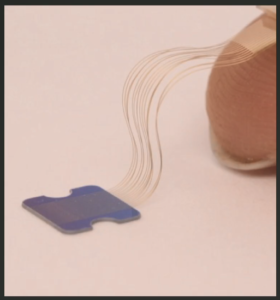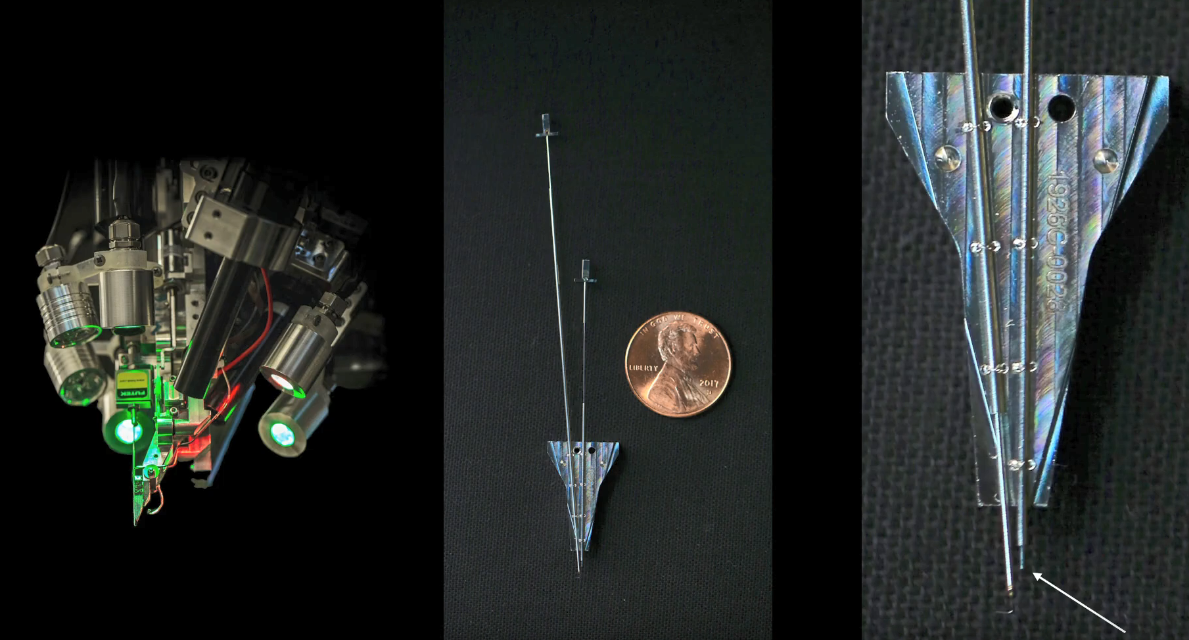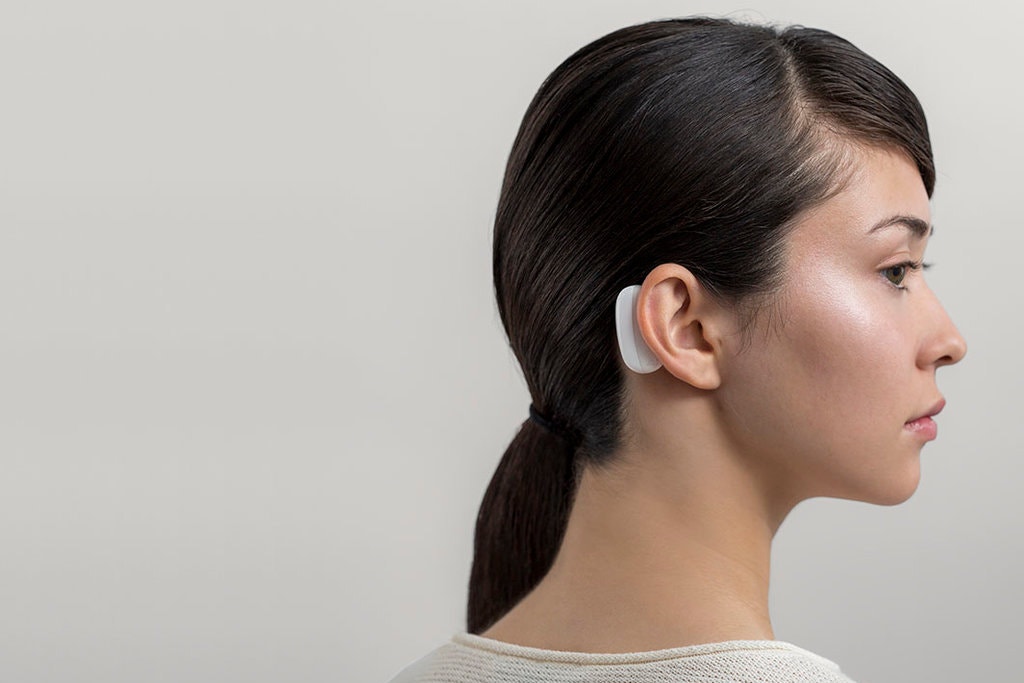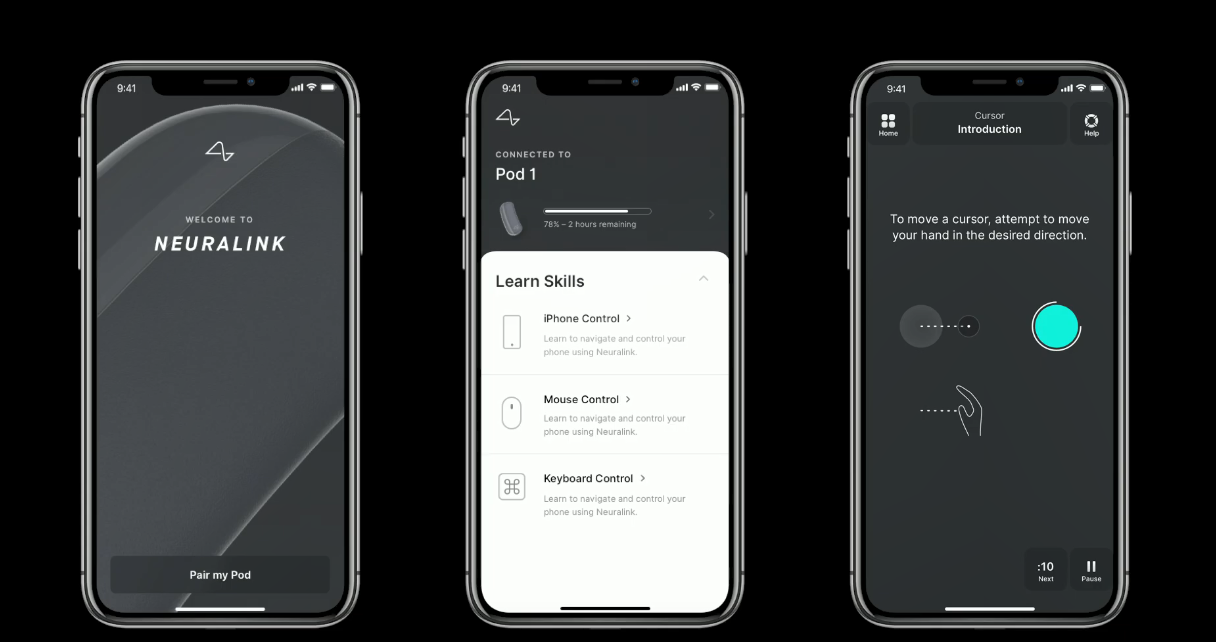After two years of being super-secretive about their work, Neuralink, Elon’s Musk’s neurotechnology company, has finally presented their progress in brain-computer interface technology. The Livestream which was uploaded on YouTube showcases a “sewing machine-like” robot that can implant ultrathin threads deep into the brain giving people the ability to control computers and smartphones using their thoughts. For its brain-computer interface tech, the company has received $158 million in funding and has 90 employees.
Note: All images are taken from Neuralink Livestream video unless stated otherwise.
Elon Musk opened the presentation talking about the primary aim of Neuralink which is to use brain-computer interface tech to understand and treat brain disorders, preserve and enhance the brain, and ultimately and this may sound weird, “achieve a symbiosis with artificial intelligence”. He added, “This is not a mandatory thing. It is a thing you can choose to have if you want. This is something that I think will be really important on a civilization-level scale.”
Neuralink wants to build, record from and selectively stimulate as many neurons as possible across diverse brain areas. They have three goals:
- Increase by orders of magnitude, the number of neurons you can read from and write to in safe, long-lasting ways.
- At each stage, produce devices that serve critical unmet medical needs of patients.
- Make inserting a computer connection into your brain as safe and painless as LASIK eye surgery.
The robot that they have built was designed to be completely wireless, with a practical bandwidth that is usable at home and lasts for a long time.
Their system has an N1 sensor, which is an 8mm wide, 4mm tall cylinder having 1024 electrodes. It consists of a thin film, which has threads. The threads are placed using thin needles, into the brain by a robotic system in a manner akin to a sewing machine avoiding blood vessels. The robot peels off the threads one by one from the N1 Sensor and places it in the brain. A needle would grab each thread by a small loop and then is inserted into the brain by the robot. The robot is under the supervision of a human neurosurgeon who lays out where the threads are placed. The actual needle which the robot uses is 24 microns. The process puts a 2mm incision near the human ear, which is dilated to 8mm.

The threads

A robot implants threads using a needle
For the first patients, the Neuralink team is looking at four sensors which will be connected via very small wires under the scalp to an inductive coil behind the ear. This is encased in a wearable device that they call the ‘Link’ which contains a Bluetooth radio and a battery. They will be controlled through an iPhone app.

Source: NYT

Neuralink/MetaLab iPhone app
The goal is to drill four 8mm holes into paralyzed patients’ skulls and insert implants that will give them the ability to control computers and smartphones using their thoughts. For the first product, they are focusing on giving patients the ability to control their mobile device, and then redirect the output from their phone to a keyboard or a mouse. The company will seek U.S. Food and Drug Administration approval and is aspiring to target first-in-human clinical study by 2020. They will use it for treating upper cervical spinal cord injury. They’re expecting those patients to get four 1024 channel sensors, one each in the primary motor cortex, supplementary motor area, premotor cortex and closed-loop feedback into the primary somatosensory cortex.
As reported by Bloomberg who got a pre-media briefing, Neuralink said it has performed at least 19 surgeries on animals with its robots and successfully placed the wires, which it calls “threads,” about 87% of the time. They used a lab rat and implanted a USB-C port in its head. A wire attached to the port transmitted its thoughts to a nearby computer where a software recorded and analyzed its brain activity, measuring the strength of brain spikes. The amount of data being gathered from a lab rat was about 10 times greater than what today’s most powerful sensors can collect.
The flexibility of the Neuralink threads would be an advance, said Terry Sejnowski, the Francis Crick Professor at the Salk Institute for Biological Studies, in La Jolla, Calif to the New York Times. However, he noted that the Neuralink researchers still needed to prove that the insulation of their threads could survive for long periods in a brain’s environment, which has a salt solution that deteriorates many plastics.
Musk’s bizarre attempts to revolutionalize the world are far from reality
Elon Musk is known for his dramatic promises and showmanship as much as he is for his eccentric projects. But how far they are grounded in reality is another thing.
In May he successfully launched his mammoth space mission, Starlink sending 60 communications satellites to the orbit which will eventually be part of a single constellation providing high-speed internet to the globe. However, the satellites were launched after postponing it two times to “update satellite software”. Not just that, three of the 60 satellites have lost contact with ground control teams, a SpaceX spokesperson said on June 28. Experts are already worried about how the Starlink constellation will contribute to the space debris problem. Currently, there are 2,000 operational satellites in orbit around Earth, according to the latest figures from the European Space Agency, and the completed Starlink constellation will drastically add to that number. Observers had also noticed some Starlink satellites had not initiated orbit raising after being released.
Musk’s much-anticipated Hyperloop (first publicly mentioned in 2012) was supposed to shuttle passengers at near-supersonic speeds via pods traveling in a long, underground tunnel. But it was soon reduced to a car in a very small tunnel. When they unveiled the underground tunnel to the media in California last year in December, reporters climbed into electric cars made by Musk’s Tesla and were treated to a 40 mph ride along a bumpy path. Here as well there have been public concerns regarding its impact on public infrastructure and the environment. The biggest questions surrounding hyperloop’s environmental impact are its effect on carbon dioxide emissions, the effect of infrastructure on ecosystems, and the environmental footprint of the materials used to build it. Other concerns include noise pollution and how to repurpose hyperloop tubes and tunnels at the end of their lifespan.
Researchers from Tencent Keen Security Lab criticized Tesla’s self-driving car software, publishing a report detailing their successful attacks on Tesla firmware. It includes remote control over the steering and an adversarial example attack on the autopilot that confuses the car into driving into oncoming traffic lane. Musk had also made promises to have a fully self-driving car for Tesla by 2020 which caused a lot of activity in the stock markets. But most are skeptical about this claim as well.
Whether Elon Musk’s AI symbiotic visions will come in existence in the foreseeable future is questionable. Neuralink’s long-term goals are characteristically unrealistic, considering not much is known about the human brain; cognitive functions and their representation as brain signals are still an area where much further research is required. While Musk’s projects are known for their technical excellence, History shows a lack of thought into the broader consequences and cost of such innovations such as the ethical concerns, environmental and societal impacts.
Neuralink’s implant is also prone to invading one’s privacy as it will be storing sensitive medical information of a patient. There is also the likelihood of it violating one’s constitutional rights such as freedom of speech, expression among others. What does it mean to live in a world where one’s thoughts are constantly monitored and not truly one’s own? Then, because this is an implant what if the electrodes malfunction and send wrong signals to the brain. Who will be accountable in such scenarios? Although the FDA will be probing into such questions, these are some questions any responsible company should ask of itself proactively while developing life-altering products or services. These are equally important aspects that are worthy of stage time in a product launch. Regardless, Musk’s bold claims and dramatic representations are sure to gain the attention of investors and enthusiasts for now.
Read Next
Elon Musk reveals big plans with Neuralink
SpaceX shares new information on Starlink after the successful launch of 60 satellites
What Elon Musk can teach us about Futurism & Technology Forecasting










![How to create sales analysis app in Qlik Sense using DAR method [Tutorial] Financial and Technical Data Analysis Graph Showing Search Findings](https://hub.packtpub.com/wp-content/uploads/2018/08/iStock-877278574-218x150.jpg)